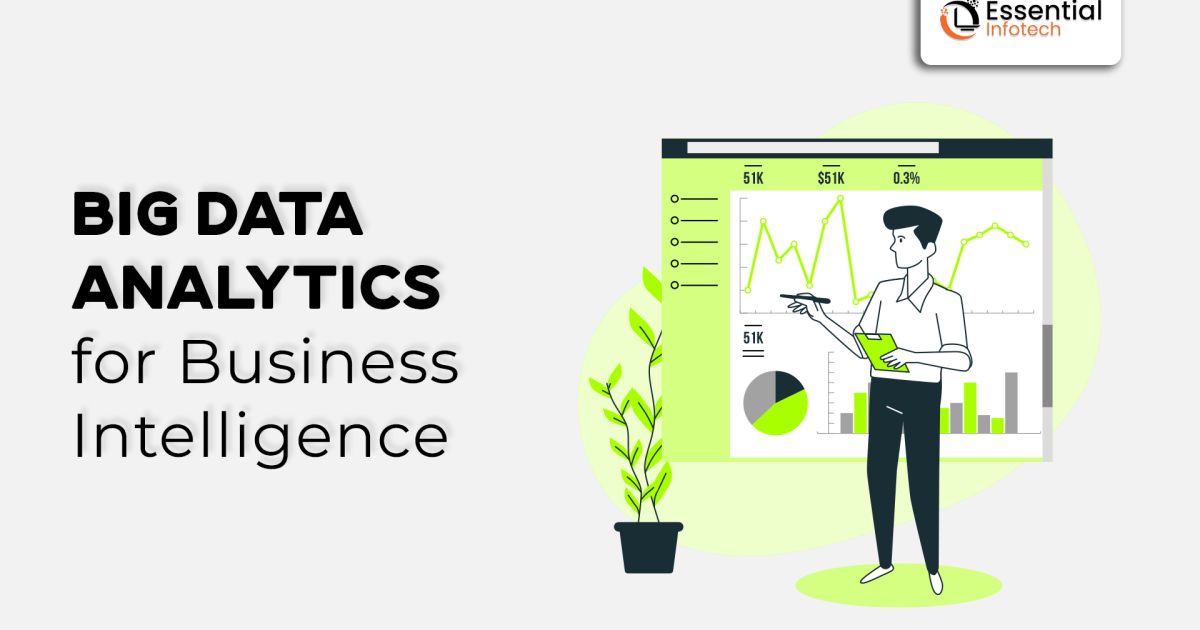

1.
Understanding Big Data Analytics
2.
Enhancing Decision-Making with Predictive Analytics
3.
Real-Time Data Insights for Agile Business Operations
4.
Leveraging Data Visualization for Actionable Insights
5.
Securing Data Privacy and Compliance
The digital age has made data
king. Large volumes of data
from
multiple sources are being flooded into businesses, offering both benefits and
challenges. Big data analytics has become an effective
tool for turning unstructured data into insightful knowledge that supports
strategic planning and well-informed decision-making. This article explores the
field of big data analytics and how business
intelligence
tactics are shaped by it.
Analyzing massive and
complicated datasets for hidden patterns, correlations, and trends is known as
big data data
analytics.
Businesses can gain important insights from both structured and unstructured
data sources, such as consumer transactions, social media interactions, and
sensor data, by utilizing advanced analytics approaches. These
insights give companies a better grasp of their operations, clients, and market
dynamics, empowering them to confidently make data-driven decisions.
A branch of big data analytics
called predictive analytics is concerned with making predictions about the
future using patterns in past data. By utilizing statistical algorithms and machine
learning models on past data, companies can predict consumer behavior, spot new
trends, and foresee changes in the market. Businesses may take
preemptive measures to address obstacles and seize opportunities thanks to
predictive analytics, which improves decision-making and gives them a
competitive edge.
Real-Time
Data Insights for Agile Business Operations
enable
organizations to make swift, data-driven decisions to adapt to dynamic market
conditions and optimize operational efficiency.
· Swift Decision-Making: Access to real-time
insights empowers quick decision-making, allowing businesses to respond
promptly to changing circumstances.
·
Operational
Optimization: Utilizing real-time data enables organizations
to
streamline processes, identify bottlenecks, and enhance overall operational
efficiency
In order to convert complicated
data sets into understandable visual representations like charts, graphs, and
dashboards, data visualization is essential. Businesses can get a thorough understanding of their
performance indicators, spot trends, and efficiently share insights throughout
the company by using visual data presentations. Decision-makers are enabled by
data visualization tools to interactively analyze data and extract valuable
insights that spur innovation and corporate expansion.
Benefits,
· Quick Decision-Making:
o Clear visualization helps decision-makers grasp insights rapidly.
o Identifies trends, outliers, and patterns for informed decisions.
· Efficient Communication:
o Simplifies complex data, fostering collaboration among teams.
o Real-time sharing and interactive exploration enhance teamwork.
· Strategic Insights:
o Uncovers actionable insights and predicts future trends.
o Interactive features facilitate ad-hoc analysis
and scenario simulation.
Ensuring the confidentiality, integrity, and availability of data,
protecting sensitive information from illegal access, and complying with legal
obligations are all part of securing data privacy and compliance. This entails
creating a culture of data protection within firms, implementing cutting-edge
technologies, and implementing complete policies.
Adherence to Regulations:
· Recognize and abide by applicable data protection
laws.
· Keep an eye on updates and modify policies as
necessary.
·
Provide channels for
reporting breaches.
Access controls and data encryption:
· Use strong encryption to safeguard your data.
· Make use of authentication methods and access
controls.
·
Put strong passwords
and multi-factor authentication to use.
Policies for Retention and Minimization of Data:
· Reduce the amount of data collected to only what
is required.
· Clearly define your retention guidelines.
·
Review and discard
unwanted data on a regular basis.
Awareness and Training of Employees:
· Give thorough instruction on data privacy.
· Encourage a privacy-aware society.
·
Promote the timely
reporting of security events.
Frequent Evaluations and Audits:
· To find vulnerabilities, do audits.
· Hire independent auditors to provide validation.
·
Put improvement
strategies into action for remediation.
Management of Vendors:
· Examine the security and privacy policies of
vendors.
· Contracts should contain safeguards for data
protection.
·
Regularly check for
vendor compliance.
To sum up, big data analytics is revolutionary for
companies
looking
to maximize the value of their data and obtain a competitive advantage in the
online market.
Businesses may stimulate creativity, improve consumer
experiences, and streamline operations by
utilizing big data analytics.
We Are A Leading IT Company Experienced In Creative And Innovative Development And Design Solutions .